Since modern man has dramatically realized that the unity of the human being is an illusion some of the highest minds of his consortium have sought - in a uncanny game of masks, mirrors and dolls - to understand how to integrate one's infinite personalities and overcome the existential nihilism that such masks potentially offer: from ETA Hoffmann's “The Sandman” and EA Poe's “William Wilson” to Hermann Hesse's “The Steppe Wolf”; from the contemporary cinema of Roman Polanski and David Lynch to Thomas Ligotti's "marionette metaphysics" and HP Lovecraft's "cosmic horror".
di Marco Maculotti
cover: Norman Lindsay, “Reflections”, 1919
(This article arises from the cataloging of the notes collected for the conference “Only masks? And the face? ", held in Florence for the Eumeswil Association on 5 December 2019; the notes regarding the part of the conference dealing with the mask in ancient rituals and the Daimon in WB Yeats will be published shortly)
Since the dawn of time the mask has been used by human beings as symbol of the "other than himself" and, at the same time, of his deepest being, beyond the contingency of everyday life. From the sacred initiation ceremonies to medieval carnival masquerades, from the disturbing literature of ETA Hoffmann and Thomas Ligotti to the cinema of David Lynch and Roman Polanski up to William Butler Yeats' Daimon, the mask still stands today in the image of the "double", of the doppelganger, of the "dark side" from which man continually tries to keep his distance and at the same time, almost unconsciously, to get closer.
But, if in the archaic age the mask and therefore the "other than self" was experienced and integrated by means of collective and individual initiation rituals, in the modern age things change significantly: the "discovery" of authors such as EA Poe , ETA Hoffmann and, later, Arthur Schnitzler and Hermann Hesse, on the fact that the human being is not a perfect unity in himself, but also a multiplicity of souls and masks, he is experienced as a dark enigma, if not even a curse. Always, of course, that one cannot accept and integrate into a personality Super partes all these disordered fragments. Thus, the awareness of the disintegration of a (illusory) unity of the ego often becomes for modern man a harbinger of restlessness and sinister omens.
1. The mask in "disturbing" literature
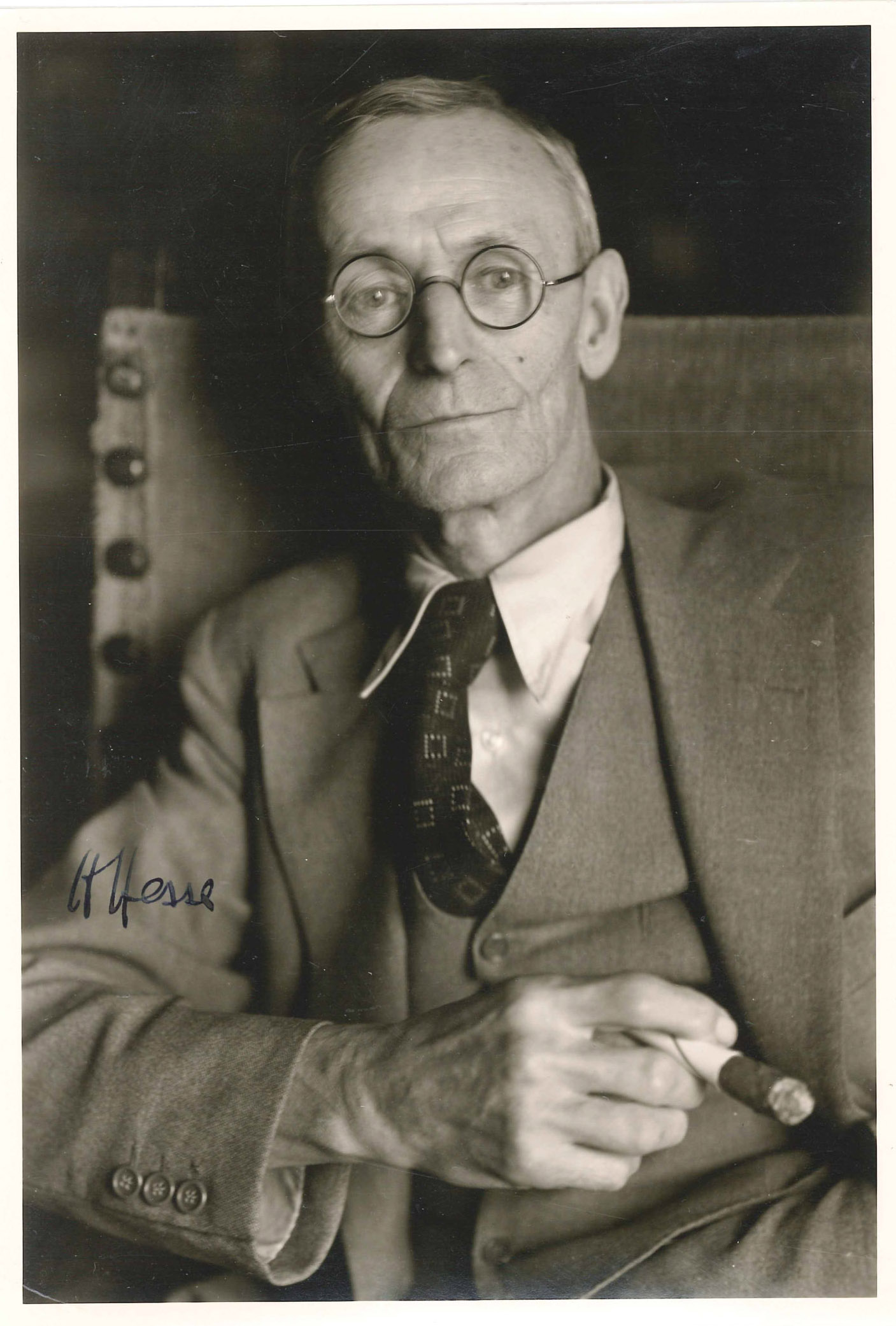
1.1. Hermann Hesse: Steppenwolf
Paradigmatic in this regard is the novel by Hesse The steppe wolf (1927), where the protagonist Harry Haller (alter ego and therefore the "mask" of Hesse himself, with whom he shares the initials HH), initially convinced that he is "composed" of only two souls (that of Man and that of Wolf), he gradually realizes that every man is composed, not by one or two, but from infinite souls:
«[…] Apparently, all men have an innate and compelling need to imagine their self as unity […]. In reality no I, not even the most naive is a unity, but a very varied world, a small starry sky, a chaos of forms, degrees and situations, of inheritance and possibility. That each tends to take this chaos as a unity and speak of his ego as if it were a simple phenomenon, well fixed and delimited: this obvious illusion to every man (even the highest) seems a necessity, a requirement of life like the breath and nourishment. "
And yet:
«The breast, the body is in fact always one, the souls instead that lodge there are not two or five, but infinite; man is an onion made up of a hundred skins, a fabric of a hundred threads. The old Asians knew this well and the Yoga of the Buddhists invented a precise technique to unmask the illusion of personality. Funny and multiple is the game of humanity: the illusion, to unmask which India has struggled for a millennium, is the same one that the West has endured the same effort to support and strengthen. "

In a central scene of the novel, Harry Haller is "initiated" into his multiplicity: first looking at himself in a mirror and seeing himself made up of an infinite multitude of "Harry", which gradually break away from the initial one, then, through Pablo (or, to put it better, Pablo's "double immortal"), through a particular "chess lesson":
«“ Here we have no name, we are not people. I am a chess player. Do you want lessons on how to build personality? […] Then give me a couple of dozen of your figures. [...] of those figures in which you have seen your so-called personality dissolve. "
He presented me with a mirror and again I saw that the unity of my person was split into numerous “I's” and the number seemed to have still grown. But the figures were now very small, roughly like chess pieces; the player took a few dozen with resolute gestures and placed them on the ground next to the chessboard. And he would say in a monotone like someone repeating a speech or a lecture given many times:
“You already know the wrong and fatal concept, according to which man is a lasting unity. You also know that man is made up of a great number of souls, of very many people. The splitting of the apparent unity in these numerous figures is considered madness […]. To the one who has seen the splitting of his own ego we show that he can reassemble the pieces at any time and in the order he likes best, thus achieving an infinite variety in the game of life. Just as the poet with a handful of characters creates a drama, so we with the figures of our dissected self build ever new groups with new games, new tensions, new situations.""
Being able to put order and make the ever-changing "game of masks" work at will: this therefore seems to be, in Hesse's novel, the only solution available to modern man to escape from his own illusory unity and madness, rising to the level of those he calls "the Immortals".

1.2. ETA Hoffmann: Sandmann
More than a century earlier, it was ETA Hoffman who forcefully placed the themes of the mask and the double at the center of his "disturbing" narrative. Neither The sand man (1815), the revelation of the fact that behind whoever was thought to be a person in flesh and blood (Olimpia) there is only a doll implicitly and unconsciously (or rather subconsciously) suggesting to Nathaniel the possibility of being himself, in the end of the accounts, one puppet, and so too, in the conclusion of the story, his fiancée Clara.
This is also noted by Jentsch, psychologist of the early 900s who greatly influenced Freud, according to whom we are faced with an example of "uncanny" when "the individual stops appearing integrated into his identity and takes on the appearance of a mechanism [exactly how Nataniele behaves in the end of the story, as "remote controlled" by the Mephistophelic Coppelius, ed], a set of parts made as they are made, which is a clockwork process rather than an immutable being in its essence».
The same can be said by taking it as a model the epileptic which, similarly to the automaton, flashes into the subconscious mind of the observer the impression that the human being is nothing more than a clockwork device, susceptible to failing and breaking:
«Not only is the epileptic perceived as something disturbing by the observer […], but the observer perceives the uncanny also in himself, because he has been clarified the mechanical nature of any human body and, by extrapolation, the fact that "mechanical processes take place in what until then he was used to considering a unitary psyche"».

On the other hand, as he points out Luke Crescenzi, "Hoffmann's use of prefacing the name of his characters with the title or social qualification of which each of them is proud, confers on the bourgeois world described [...] the appearances of a puppet theater in which the roles already designate the individual characters»[CRESCENZI 57]. The Hoffmannian characters, of which Olimpia in Sandmann is the prototype, they reveal themselves in one way or another «being [i] depr [i] of interiority and mechanically determined [i] in [their] movements - [...] the technical product in which it is concretized the nightmare of depersonalization and programming of the individual as the destiny of modern man" [five].
And again: «The trauma that Nataniel undergoes in front of the dismemberment of Olympias is the same shock of the romantic artist, who discovers his own folly by touching the lie of his representations "[96]. Hoffmann thus places the reader in front of "a reality of masks, always ambiguous and elusive […]. Unveiled in its ambiguity, reality shows itself to be empty of any ideality and is reduced to a "place of laughter" or a scenario of obscure plots "[141].
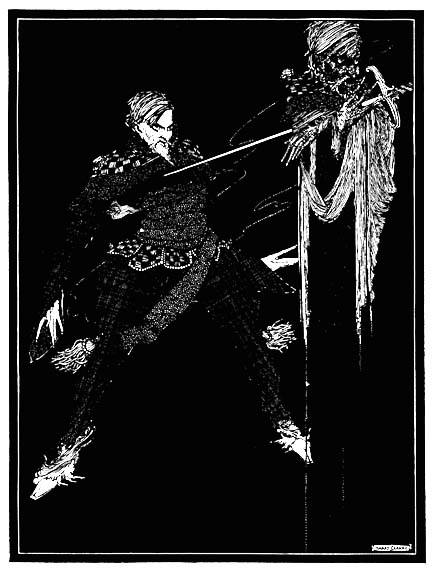
1.3. EA Poe: William Wilson and The Mask of the Red Death
More or less in the same years as Hoffmann, a colleague of his overseas investigated the depths of human interiority, and therefore, consequently, also the theme of the double and the mask. Edgar Allan Poe, master of "black" literature, in william wilson (1839), stages the homonymous protagonist in the act of being "stalked" for his entire existence by his "double", completely identical to him (even in the name), although of an opposite nature: while the former leads an unruly life dedicated to deceit, his own doppelganger wands him and exposes his tricks to his acquaintances. She looks in a way like the voice of his conscience, to the point that Wilson himself acknowledges: "every time he crossed my path he did so only to frustrate and foil plans and projects which, if carried out, would result in evil deeds."
However, his resentment is too strong and it will lead him into the final scene of the masked ball (note that also the key scene, placed towards the end of the novel, of the aforementioned Steppenwolf of Hesse takes place during a masked ball), to collide with his "double": but the one who, hit by the blow, falls to the ground lifeless is in the end William Wilson himself:
«Where before I had not observed anything, there was now a large mirror, and while I stared at it, numb with terror, my own image came towards me from the frame, but all altered in the face, bloody, and with an uncertain and wavering step. So it seemed to me, but it wasn't really me. He was my opponent… he was Wilson, the one who stood before me in the agony of death. His mask and his cloak lay on the ground where he had thrown them; there was not a single fold in his robe, not a feature of his face that was not in all respects absolutely identical to my own! It was Wilson, but his voice was no longer a whisper now and I thought I heard myself speaking as he said, “You have won, and I yield in front of you; but, from this moment, you too are dead… dead to the world, to heaven, to hope! Because you existed in me ... and, in my death, look at this image, which is your own, how horribly you murdered yourself. " »
Another Poe tale in which the theme of the mask is dealt with is The mask of red death (1842). In this story, Prince Prospero retires to his castle surrounding himself with a thousand guests, to celebrate to the bitter end while the plague rages outside the walls. However, during the usual, paradigmatic, masked ball, his nerves are put to the test by a participant wearing a bloody shroud and a corpse mask. It is evident, in Prospero's psychology, the absolute will to deny death itself, as a destiny reserved for any human being as a human being: in this sense the mask unexpectedly worn by his guest puts him face to face with the very fact of duty, like everyone else, sooner or later die. Which will happen on time, together with all the other guests of the masquerade, when he realizes that it is not a mask at all, and that its unexpected guest is none other than the Great Reaper.
2. The mask in cinema
These modern perspectives regarding the disintegration of the illusory unity of the ego and the realization of the precariousness of the state of "sanity" of the human being, deriving largely from ETA Hoffmann's "nocturnal" tales, are found in the cinematographic works of some of the greatest directors of our time, such as Polanski, Lynch and Kubrick.
2.1. Roman Polanski: The tenant on the third floor

In fact, if we compare the salient reasons of The sand man with some of Roman Polanski's obsessions (especially The tenant on the third floor, with all references to theme of the "double" and the disintegration of the ego; but think also of Repulsion and for other Hoffmannian tales more witch-themedThe classic Rosemary's Baby) you will not be able to help but agree with us. The sensations experienced and the suggestions suffered by Nataniele in Der sandmann the Polanskian protagonist wonderfully follows ultimate, especially as regards the so-called “apartment trilogy”, in which the themes of doppelganger, of the "uncanny", of the "puppet" character of man and Weird understood as an implacable and inevitable destiny (wyrd).
These impressions are already found in the novel of the same name by Axe from which Polanski took the subject, as also underlined by Ligotti, which will be discussed later here:
« Tell me, at what precise moment does an individual stop being what he thinks he is? You cut off your arm, okay, I say, "Me and my arm." You cut off your other arm too, I say: "Me and my two arms." Take away my stomach, my kidneys, assuming it is possible, I say: "Me and my intestines." Follow, right? And now if you cut my head off, what do you say? "Me and my head" or "Me and my body"? What right does my head have to call itself me? What right? »
Single individual real suddenly descended into a condominium that appears almost like a separate cosmos due to the sinisterly carnival characterization of its tenants (as already in Rosemary's Baby), Trelkovsky's personality is progressively "invaded" to the point of being almost entirely "replaced" with that of a certain Simone Choule, who lived in his apartment before him and who had vacated him after a suicide attempt.
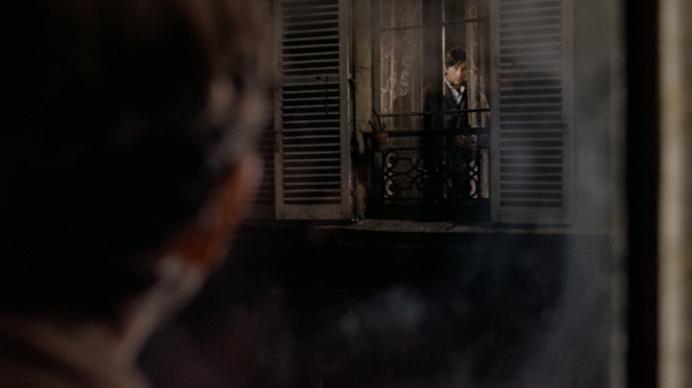
It is clear, even if it is not explicitly stated, how the previous tenant also suffered a process of disintegration and dissolution of the ego, as in the case of Trelkovsky, by the Mephistopheles tenants of the Parisian building. In this sense, many Egyptological references scattered throughout the Polanskian film seem to suggest a “magical” influence put in place by the latter; to the point that finally Trelkovsky, now fully "possessed" by mask by Simone Choule, in a somewhat theatrical scene she climbs the ledge and performs the extreme gesture exactly as she herself had done, while theaudience of the condominium, arranged as if it were inside the boxes of a theater, awaits the dramatic climax of the show applauding and encouraging the "comedian" to throw himself, moreover tugging at a man dressed as a jester and with the mask by Trelkovsky himself.
The film ends in a circular way, bringing the discourse on the existence of a unitary and detached conscience from those of others to the extremes. As Ligotti writes, in the concluding sequence of The Tenant, "The new patient, like those who preceded him [namely Simon Choule in the opening scene, ed], he identifies with horror the one who came to see him. He is himself. Immobilized by wounds, with his face wrapped in bands [in the manner of an Egyptian mummy, ed] who leave only one eye and mouth exposed, he realizes that he has swapped places with the woman whose apartment he craved. He may have fallen into a circle of reincarnations, and maybe it's not the first time he's found himself at his bedside».
At what precise moment, Therefore, does an individual cease to be the person he - and anyone else - thinks he is? Ligotti comments: «when he realizes he has been trapped in a identity paradox and that for him there is no way out as long as he believes he is something he is not "[194].
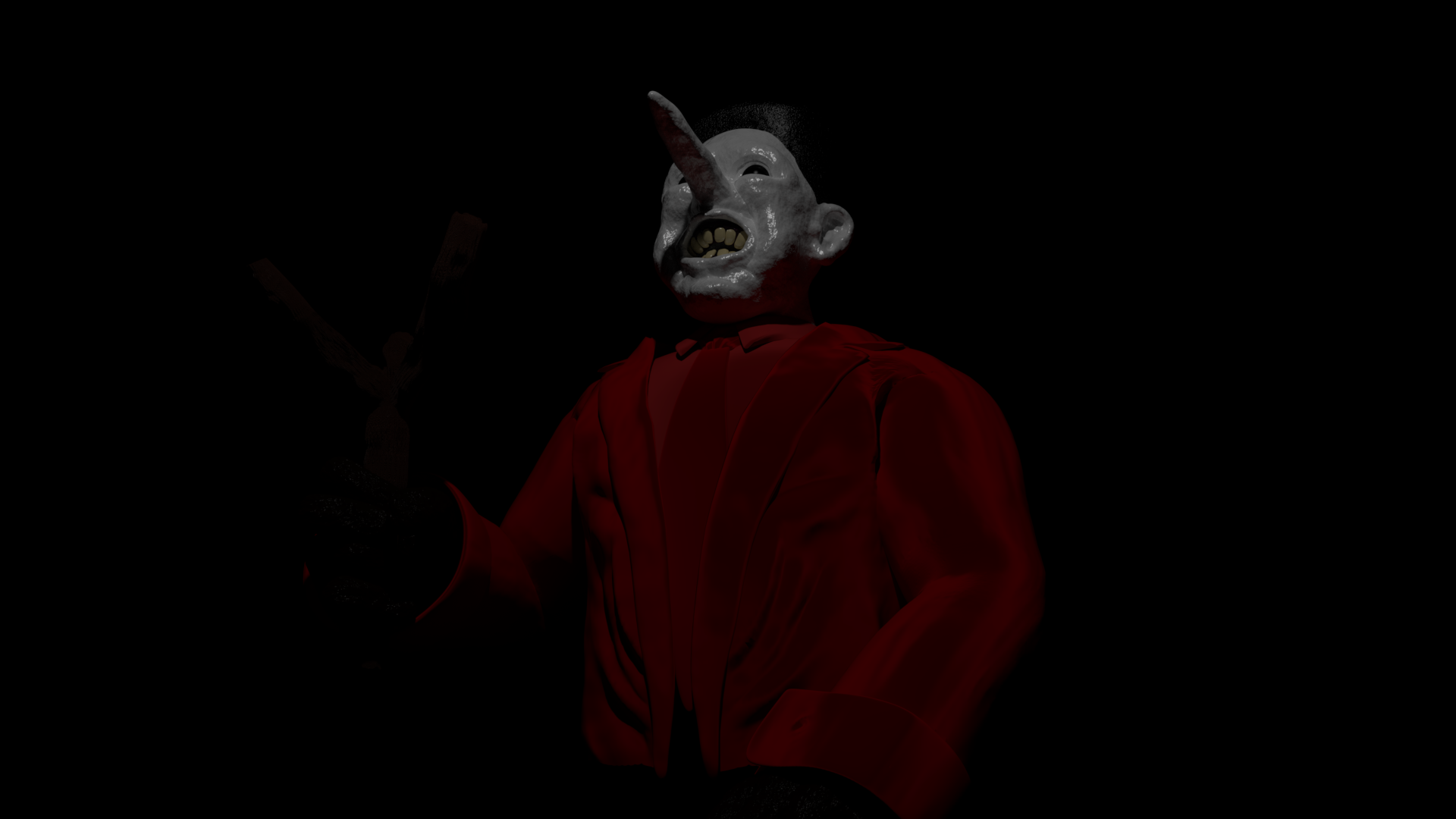
2.2. David Lynch: doppelgänger and puppets
Hoffmann also seems to have heavily influenced the cinematographic poetics of David Lynch: the structure a Moebius strip of his films, the various doppelganger existing in independent yet interconnected space-time segments, the casual recourse to the "uncanny" in all its possible and imaginable branches are what comes closest to the visionary Hoffmann in the context of the "seventh art".
Compare, for example, Hoffmann's “games of mirrors” with the dream paroxysms of Lost Highways o Mulholland Drive, a film in which different characters, played by the same actors, represent distinct fractions of the same person in different space-time lines, or more prosaically - and Freudianly - different personalities in conflict cohabiting within the same person. Moreover, it can be noted that often the personalities more "in light" than the others reveal themselves, at the end of the film, "daydreams", mere illusory masks manufactured by the protagonists to escape from an insignificant or otherwise unsatisfactory destiny.
In the mythopoiesis of Twin Peaks, the characters that come closest to the concept of "mask" are undoubtedly the disturbing presence of the "Black Lodge": Bob, the Man from Another Place, the Woodmen, Jumping Man. The latter, in particular, wears the long-nosed mask typical of the medicine-man heyoka, also called "sacred clowns". Characters of this kind are also present in the above-mentioned Lynchian films: think, for example, of the "mysterious man" of Lost roads and to the "bum" of Mulholland Drive.
All these enigmatic characters are to be seen as "subtle", "demonic" or "feral" entities, and it is no coincidence that they are represented like automata or puppets: they often move in jerks, speak in puzzles and non sequitur, the sentences come out of their mouths as if they were pronounced backwards). Furthermore it must be noted that, similarly to the Gaelic tradition of the Changeling created by Fairiesgods also dwell in the "Black Lodge" shapeshifter o "Dark doubles" (tulpa) of some characters, identical to their respective counterparts in the surface world, except for the glassy eyes (another feature reminiscent of the mask). Moreover, these are the themes that lead us to the so-called "Paraphysical hypothesis" by John Keel and Jacques Vallée, which we have already discussed elsewhere on more than one occasion.
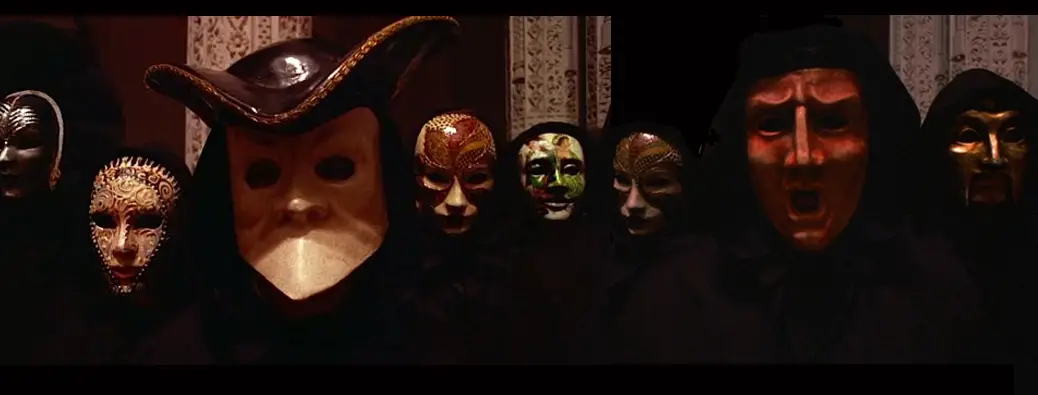
2.3. Stanley Kubrick: Eyes Wide Shut
Another well-known film that develops the theme of the mask is Eyes Wide Shut di Stanley Kubrick, inspired by the novel by Arthur Schnitzler Double dream. Obviously the masked ball scene it is central in this sense, but the entire film is designed in such a way as to highlight the fleeting border that separates reality from fantasy.
All characters appear as puppets or comedians, impersonating well-defined roles: some of these "masks" are grotesque, like the daughter of the shopkeeper who rents morals. The mask worn by the protagonist at the masked ball and abandoned on the pillow next to his sleeping wife is a powerful image, which reveals how wearing a mask is the order of the day in the couple game. Yet, in the final scene, the final dialogue between husband and wife seems to go in another direction: that of letting go of the masks, whatever they are, that have put their relationship in crisis.
Schnitzler moreover he was interested in Freudian psychoanalysis, so it is not surprising that the whole history is founded on some very marked psychological elements; but Kubrick takes it to another level, putting it on stage nowadays and moreover by having two really married actors play the part of the couple in crisis, Tom Cruise and Nicole Kidman, which will soon separate. When they say life that imitates art.

3. Thomas Ligotti and the metaphysics of the marionette
If there is a writer active today who can be considered the continuer of the disturbing Hoffmannian, it is undoubtedly the American Thomas Ligotti, author of numerous Lovecraftian-inspired horror stories but above all of a disenchanted essay entitled The conspiracy against the human race (2010), which among other things inspired the most significant dialogues of the first season of the television serial T.
This work of his, partially focused on the rediscovery of some nineteenth and twentieth century nihilist philosophers such as Zappfe, Michelstaedter and Mainländer, gives ample space to the uncanny sensation experienced by the human being in front of a puppet, as the latter, underneath, recognizes that he is similar to it: "Since alarming people does not help to market puppets," he writes, " these are not created with such an unpleasant resemblance to the rest of us that they can be mistaken for human beings, except in the dim light of a dark cell or a messy attic. We need to know that puppets are puppets»[LIGOTTI 16].
As a logical consequence, Ligotti mentions it as one of the most classically disturbing situations in the literary vein of supernatural horror a puppet that comes to life, as “it would deny all conceptions of natural physicalism, and would affirm one metaphysics of chaos and nightmare. She would still be a puppet, but a puppet with intellect and will, one puppet human - a paradox capable of disrupting reasonableness more than a living dead man ». What is more disturbing, however, is that “this is not how they would see it. Human puppets would not have the slightest awareness of being puppets"[17]. In short, we can think of ourselves as "naked monkeys or incarnate angels": everything except living puppets. Our sanity would be at stake: "The worst thing we could know - worse than discovering that we are descended from a mass of microorganisms - is that we are nobody instead of someone, puppets instead of people" [five].
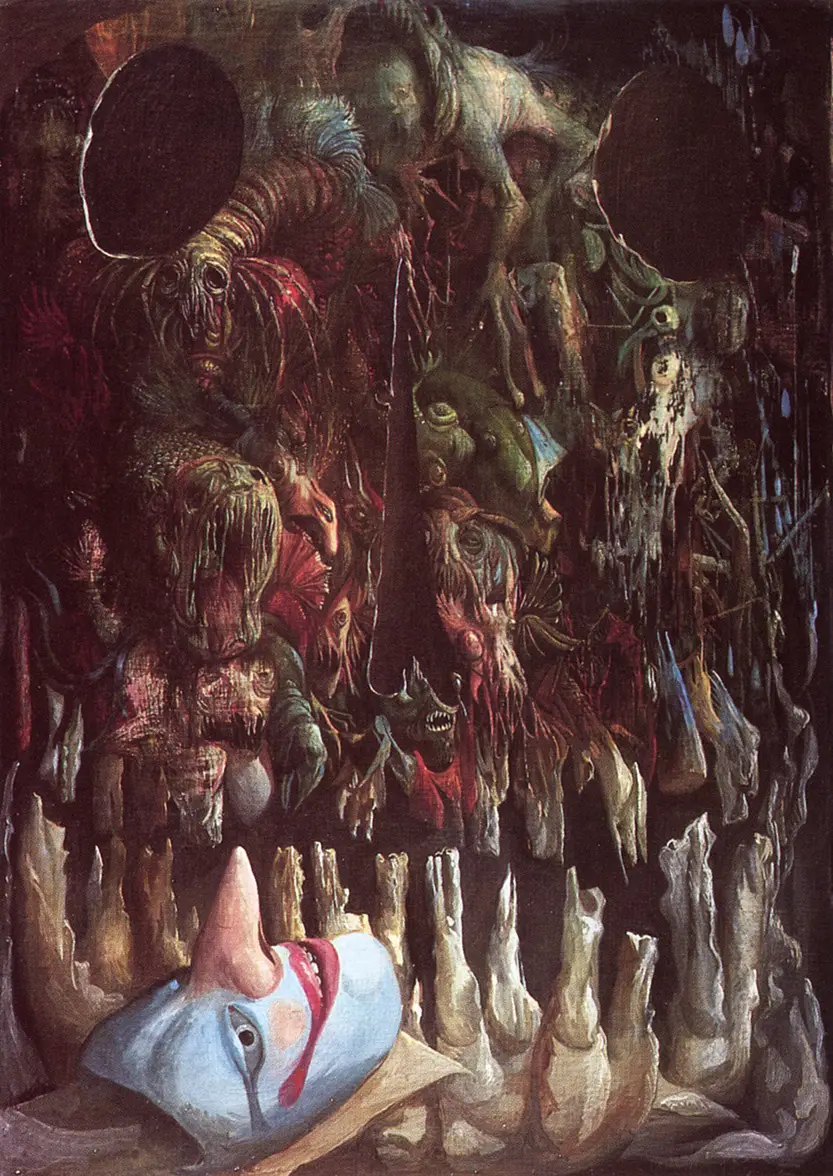
And yet, unfortunately, in Ligotti's opinion the proximity of the human being to this sort of automaton endowed with vital breath it is too clear-cut to be ignored: in fact, no matter how hard we try to evade our mental prison, we can only conceive of ourselves as "a biological paradox that can neither live with one's own conscience nor without it"[27]. Or, in other words - we say - nor with their own Masks nor without. It follows that, in Ligottian philosophy, human existence is equal to a theatrical performance in which everyone plays their part: "life is a scam that we must perpetrate against ourselves,He writes, "hoping not to reveal the other deceptions that would leave us stripped of our defense mechanisms and completely naked in front of the fixed, silent void" [Ibid.].
Through these dark ruminations, Ligotti reaches the cosmic horror of HP Lovecraft and Schopenhauer. In them Worldview human beings appear in all respects as puppets or remote controlled automata in the hands of blind forces behind the scenes of reality [48-49]:
« With the springs loaded like toys by some force […] organisms run doing what has been preordained for them, until the moment they stop moving. In pessimistic philosophies only force is real, not the objects it activates. They are just puppets and if they possessed a conscience they might mistakenly think that they are self-winding individuals acting on their own. »
The conclusion, for the Providence dreamer as for the German philosopher, it can only be terrifying: "behind the scenes of life there is something harmful that turns our world into a nightmare».
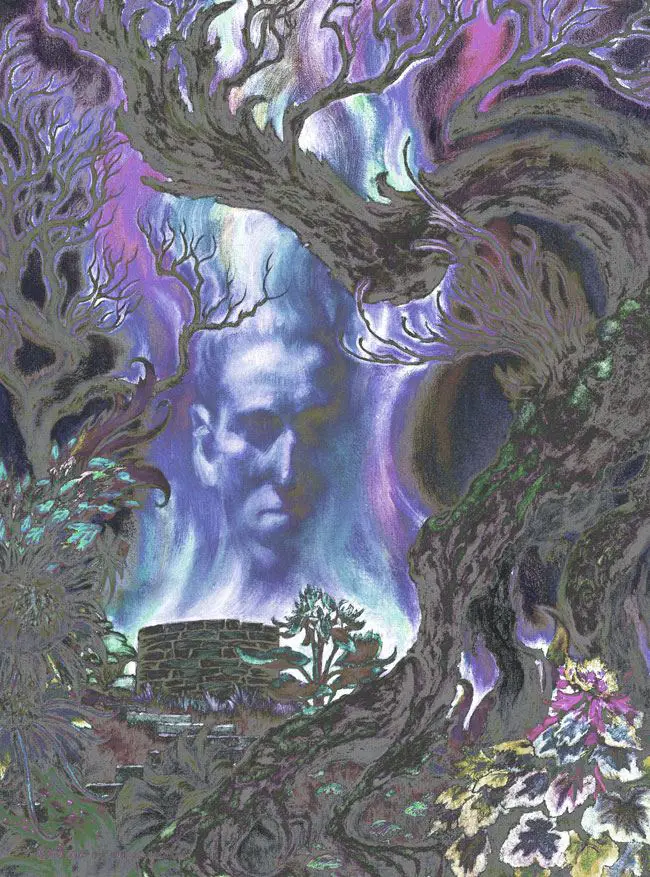
In the literature of HP Lovecraftin fact, the mask becomes the spy of an ancient curse. In this sense, the "Innsmouth mask" in the tale of the same name is the sign of a progressive genetic degeneration destined to bring anyone who finds it to a pre-human state, close to that of fish creatures. Nose and ears atrophy, pseudo-gills grow on the neck, eyelids retract causing the pupil of the eye to pop out. The mask, on the other hand, was always connected in some way to a certain proteism, ie a return of forms to the undifferentiated, what Machen defined "Protoplasmic regression", consequence of the meeting with the Great God Pan - that is to say with reality beyond the veil of illusion that has fallen over the eyes of humanity.
In the tales of the "Myths of Cthulhu"instead, this terrible power is the prerogative of the Great Ancients and their descendants. The protagonist himself will discover, at the end of the story, of have the Innsmouth mask. But, unlike what the reader might imagine, he accepts his condition: after all one mask is as good as another. On the other hand, the Lovecraftian ruminations on the destiny of humanity, considered as an army of mannequins who, giving himself excessive importance and disregarding his own inability to influence the great cosmic mechanism, marches at full speed towards his own ruin.
As we have already said in this regard to the Sandman by Hoffmann, nature puppet of the human being reveals itself in a terrible way to our subconscious, among other things, through the medium of epileptic crisis. Ligotti cites in this regard Jentsch, who wrote that [80]:
"It is not without reason that [we] spoke of epilepsy as a morbus sacer, as of a disease that does not originate in the human world, but in enigmatic foreign spheres: in fact, the epileptic convulsive access reveals to the observer that the human body, which under normal conditions functions in such a sensible, purposeful and unitary way under the guidance of consciousness, is a tremendously complex and subtle mechanism. This is an important reason why the seizure is capable of causing a demonic impression on bystanders. "
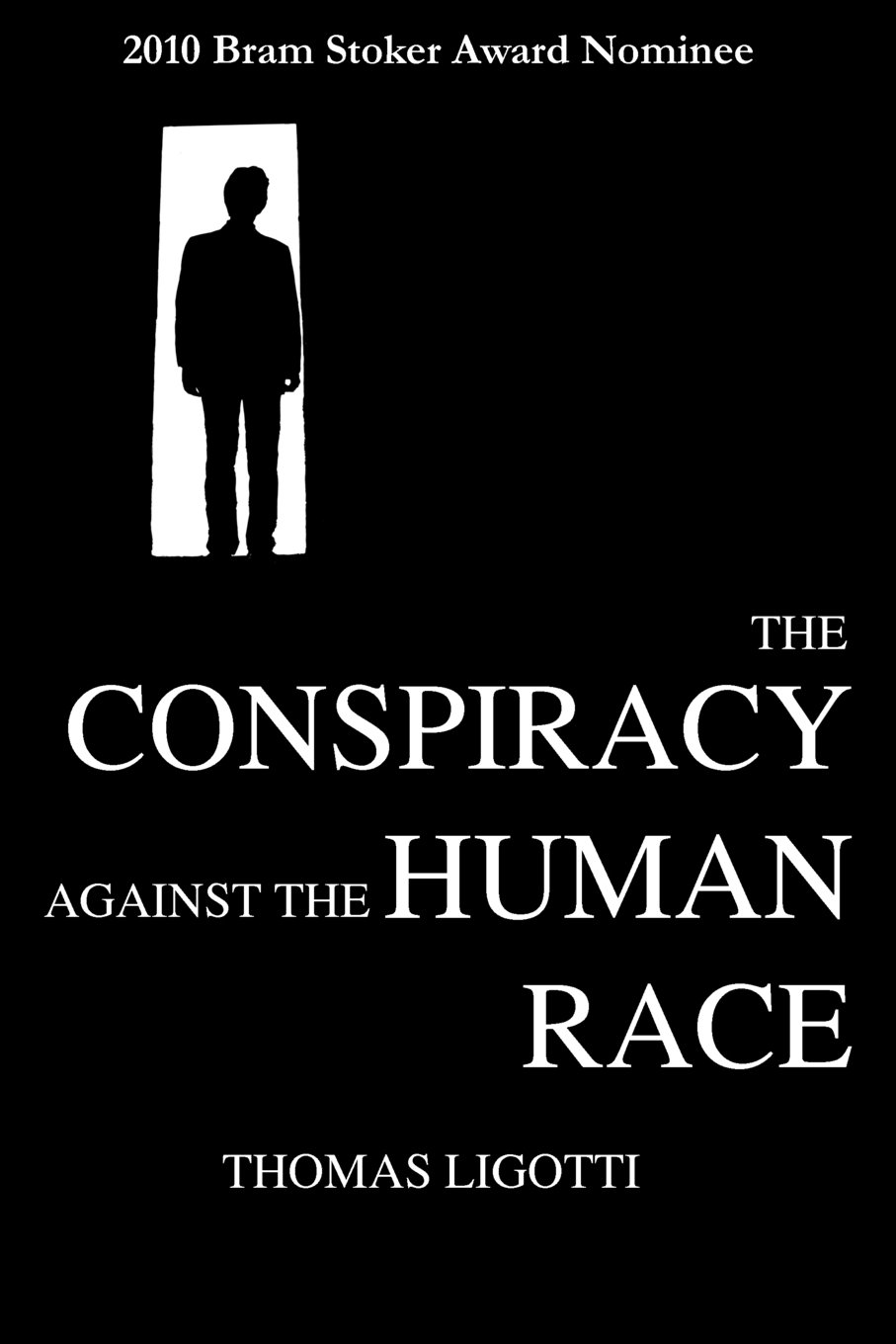
PThe main accused of the miserable state of the human being would be, for all these thinkers, an abnormal and disproportionate development of consciousness, which would have detached humanity from the rest of creation, leading it on the path of depravity and nihilism [98-99]:
“Now our species is extinguished in great epidemics of insanity, because we now know that behind the scenes of life there is something deleterious that makes our world a nightmare. We now know that we are disturbing paradoxes. We know that nature has crossed over into the supernatural by manufacturing a creature that cannot and should not exist according to natural laws, and instead does exist. »
And again: «We are the only ones who keep in our mind the atmosphere of a supernatural world with its horrors. We are its creators but also what it created: uncanny objects that have nothing to do with the rest of creation" [five]. Moreover, themes that - to close our study "circularly" - were also made explicit by the same Hesse ne The steppe wolf, where we can read:
«Look at an animal, a cat, a dog, a bird […]. And you will see that everyone is okay, that no animal is embarrassed or does not know what to do and how to behave. They don't want to flatter you or impress you. No comedies. They are as they are, like stones and flowers and like stars in the sky. "
The human being, on the other hand, as burdened by a sort of enigmatic “original sin”, appears completely detached from Creation, almost a foreign object, to the point that Hesse remarks ominously: «Yes, it's really true. The devil is the spirit and we are his wretched children. We have detached ourselves from nature and are suspended in the void».
Bibliography:
CRESCENZI, Luke: The raging vortex of time. ETA Hoffmann and the crisis of the romantic utopia. De Rubeis, Rome 1992
HESSE, Hermann: The steppe wolf, 1927
HOFFMANN, Ernst Theodor Amadeus: The man of the sanda, 1815
JENTSCH, Ernst: On the Psychology of the Uncanny, 1906
LIGOTTI, Thomas: The conspiracy against the human race. Il Saggiatore, Milan 2016
LOVECRAFT, Howard Phillips: The Innsmouth mask, 1931
POE, Edgar Allan: The mask of red death, 1842
POE, Edgar Allan: william wilson, 1839
SCHNITZLER, Arthur: Double dream, 1926
TOPOR, Roland: The tenant on the third floor, 1964

10 comments on “The human being as multiplicity: mask, "doppelgänger" and puppet"